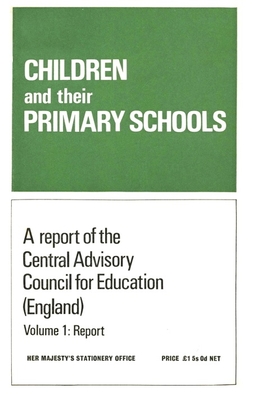Plowden Report facts for kids
The Plowden Report is a famous report from 1967 about primary schools in England. It was officially called Children and their Primary Schools. This report looked at everything about primary education. It took about three years to put together. The council that wrote the report was led by Bridget, Lady Plowden. The report is named after her.
Contents
Why the Report Was Needed
The idea for this report came from Sir Edward Boyle. He was the Education Minister in 1963. He asked the council to "consider primary education in all its aspects and the transition to secondary education." This means they had to look at how kids learned in primary school. They also looked at how they moved on to secondary school.
Before this, the last big study on primary education was in the 1930s. That was done by the Hadow Committee. While the Plowden Report was being written, the Labour Government made some big changes. They wanted to replace the tripartite system and the 11-plus exam. These systems sorted students into different types of schools. Instead, they wanted comprehensive schools for everyone. The government also planned to raise the school-leaving age to 16. It was 15 at the time.
During this period, new ideas about how children learn were popular. Thinkers like Jean Piaget had a big influence. They believed that children learn best when they are actively involved.
What the Report Said
The Plowden Report is well-known for supporting a "child-centred" way of teaching. This means putting the child's needs and interests first. The report stressed that "at the heart of the educational process lies the child."
Here are some of the main ideas and recommendations from the report:
- Schools should work closely with children's families.
- Primary schools should be used more often, even outside of school hours.
- Schools in poorer areas should get extra help and funding. This was called "positive discrimination."
- Teacher training colleges should help teachers learn how to teach English to immigrant children.
- There should be a new study of primary education every 10 years.
- Nursery schools should be available for children from age three.
- Schools could be set up in a "three-tier system." This would mean first schools, middle schools, and secondary schools. Students would move at ages 8 and 12.
- Schools should not rely only on tests to decide which secondary school a child goes to.
- Physical punishment, like caning, should be stopped in primary schools.
- The number of students in primary school classes should be smaller.
- The term "slow learner" should be used instead of "educationally sub-normal."
- More men teachers are needed in primary schools.
What Happened Next
By the time the report was finished in 1967, a new government was in power. Anthony Crosland became the new Education Minister. He received the report, but its ideas were put into action slowly.
Some local areas started making changes on their own. For example, some introduced the three-tier school system. Over the years, many of the report's ideas became part of new laws. For instance, state-funded nursery provision became common. Schools started working more with families. Physical punishment was banned. Programs to teach English to non-native speakers grew. And the comprehensive school system became widespread.
However, not all ideas stuck. The three-tier system is now rare in Britain. Most children still move from primary to secondary school at age 11. Also, male teachers are still a small group in primary schools.
A New Look at Primary Schools
A new study of primary education in England began on October 2, 2006. It was led by Professor Robin Alexander and was called The Primary Review.
Where to Find Original Information
The official papers from the Plowden committee are kept at The National Archives. These are records from the Department of Education and Science. Bridget Plowden's personal papers, including notes about the report, are at the Archives of the Institute of Education, University of London.


